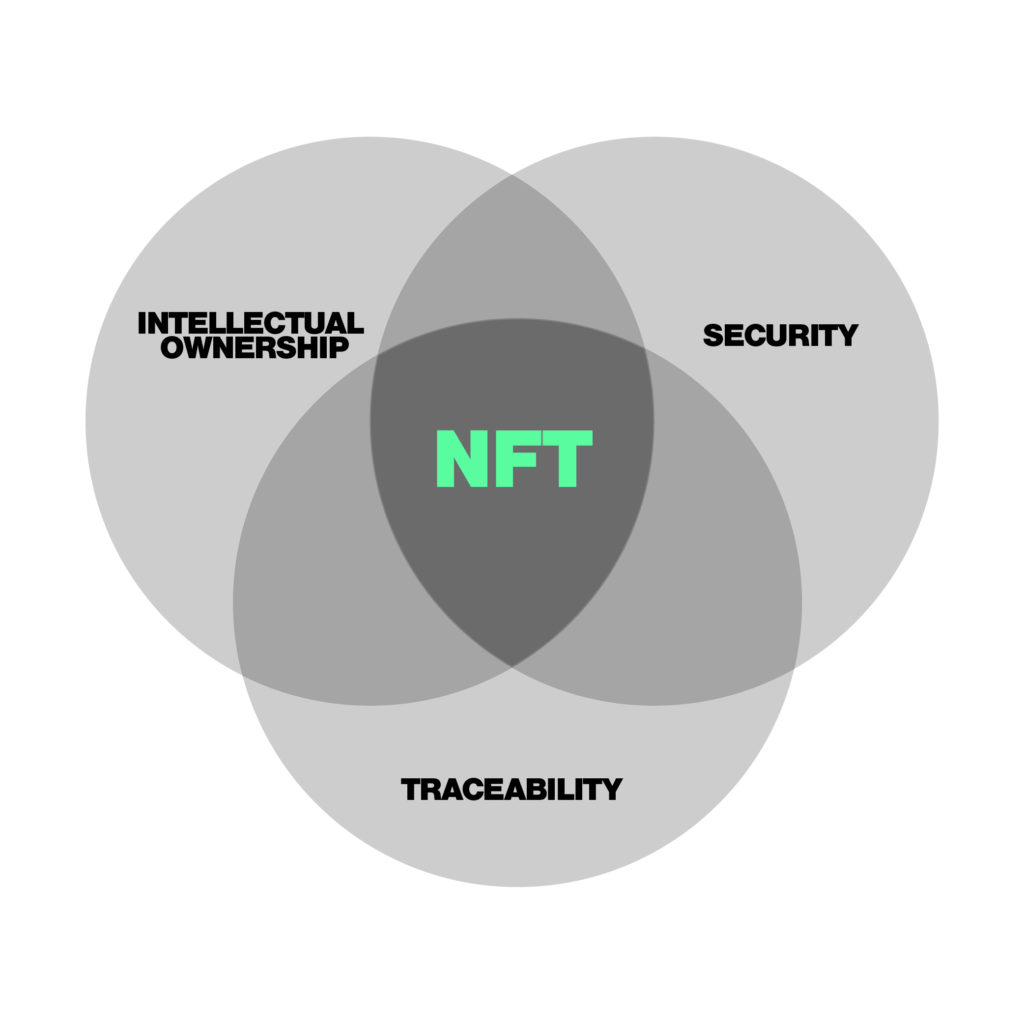
1. Intellectual Ownership
Though often times misunderstood as only being a digital version of an original, in the same way an image download or a screenshot is, NFTs go beyond this. An NFT can be understood as a virtual certificate to prove ownership of a digital asset. This virtual certificate, is traceable, trackable, and one of a kind, unlike a download or a screenshot.The term non-fungible quite literally means, not something you can exchange/break down/mix with other similar goods or assets. Something non-fungible cannot be replicated or broken down and traded into valuable parts in the same way you could do with stocks, a $10 bill, or even the slices of a whole apple. An NFT is thus, a digital certificate of a non-fungible token that cannot be broken down and is completely one-of-a-kind.
Another common misunderstanding is that an NFT can be screenshotted or downloaded. This can be dismantled with the example of taking a screenshot of the photograph of the Mona Lisa, or even a photograph of the work in the Louvre itself, or a poster version of the work in the gift shop. None of these examples indicate ownership of the painting itself. We can accept that the screenshot, photograph and poster are copies of the work, and not the original.
So the argument is, why should an NFT version of an original artwork be of more value? The difference with physical paintings like the Mona Lisa is that they run the risk of forgery, theft, and potentially even being destroyed–as we’ve been seeing in the news, with Just Stop Oil protestors– or even by a house fire.
An NFT cannot be destroyed in the same way, nor can it be stolen, forged, have tomato soup thrown, or go up in flames. This of course makes the investment for the collector, much more reliable.
2. Security
The blockchain architecture behind modern cryptocurrencies, NFTs, and decentralized applications has significant built-in security features. Once data blocks have been added to the blockchain database, they are immutable. Blocks are verified according to consensus mechanisms that weed out fraudulent transactions and protect against hacking. A hacker can’t change, edit or steal them, thus making ownership secure– when someone purchases an NFT, it becomes indisputably theirs.
3. Traceability
Since blockchain records all data and transfer operations permanently, blockchain art provenance is as easy as retrieving and analyzing all the transfers and addresses involving the NFT in question. Assets can be traced reducing the risk of intellectual property theft and forgery. An NFT certification of a fine art photograph is completely trackable and secure, ensuring that both artist’s work and provenance, and legitimacy are protected, securing collectors’ investment in real-time.
Without blockchain, fine art photography and other artwork provenance is often a time-consuming, research-intensive undertaking, that sometimes does not always yield reliable and accurate results.

